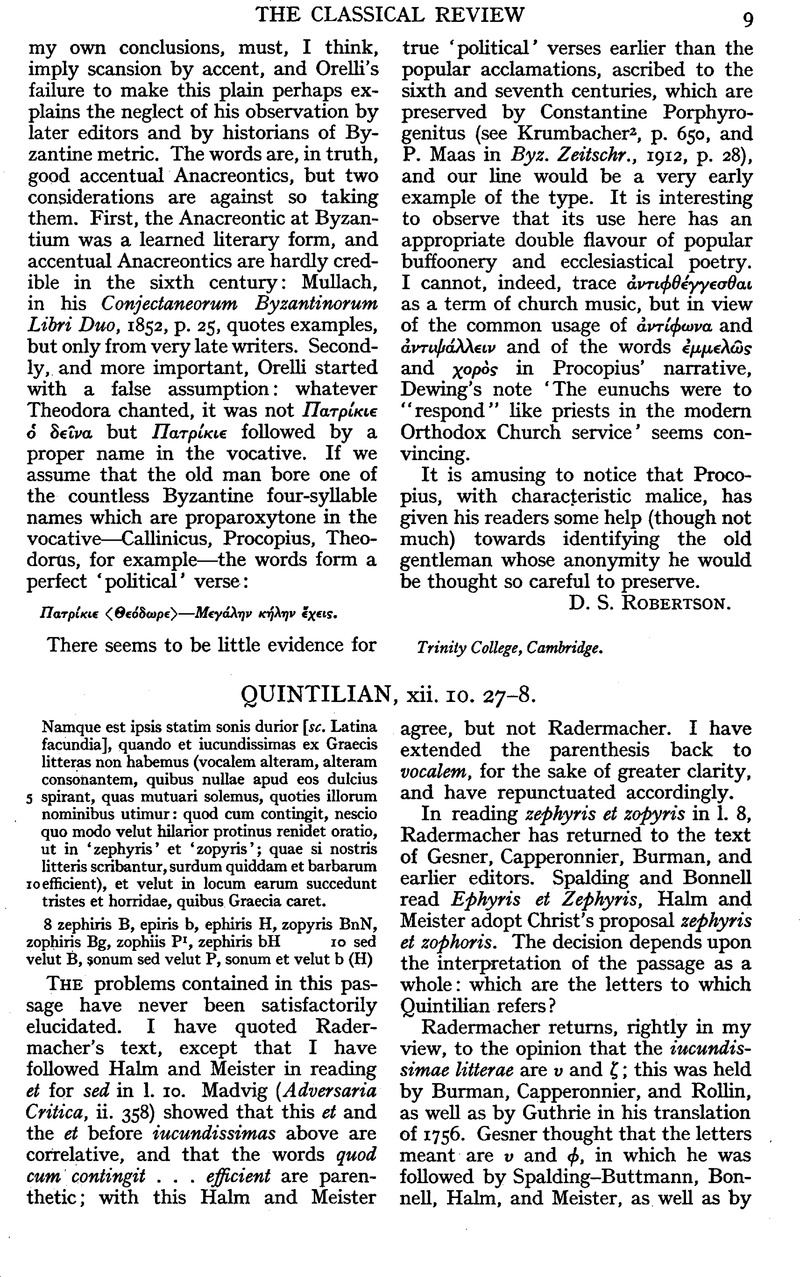No CrossRef data available.
Article contents
Quintilian, xii. 10. 27–8
Published online by Cambridge University Press: 27 October 2009
Abstract

- Type
- Review Article
- Information
- Copyright
- Copyright © The Classical Association 1943
References
page 10 note 1 One of these passages is interesting. Maximus Victorinus writes (Keil, GL vi. 196. 3) ‘quae sunt litterae peregrinae? Y et Z. quare peregrinae? siquidem a nobis propter Graeca nomina adsumptae sunt, ut puta “Hylas”, “zephyrus”. quae si adsumptae non essent, Hulas et sdepherus diceremus.’ A similar statement is made by the grammarian Audax (Ibid. vii. 326. 25), except that he has hymnus for Hylas, and transliterates zephyrus as diefirus. Neither passage provides reliable evidence for the transliterated form of zephyrus, as the MSS. vary considerably (and in any case the period is too late to be relevant here); but it should be noted that Victorinus does not substitute f for ph. No other grammarian illustrates the ‘borrowed letters’ by zephyrus: can Victorinus have had Quintilian in mind, and can Quintilian actually have written in Hyla et zepkyris? Hyla might well have pro ved too much for a scribe, and a corruption or lacuna might have resulted which was ultimately filled by one of the stopgaps in our MSS.
page 11 note 1 So also does Marouzeau, , Traité de Stylisiique appliquée au Latin, p. 8, although he does not mention the difficulties of the passage. He reads zephyris et zophoris.Google Scholar


